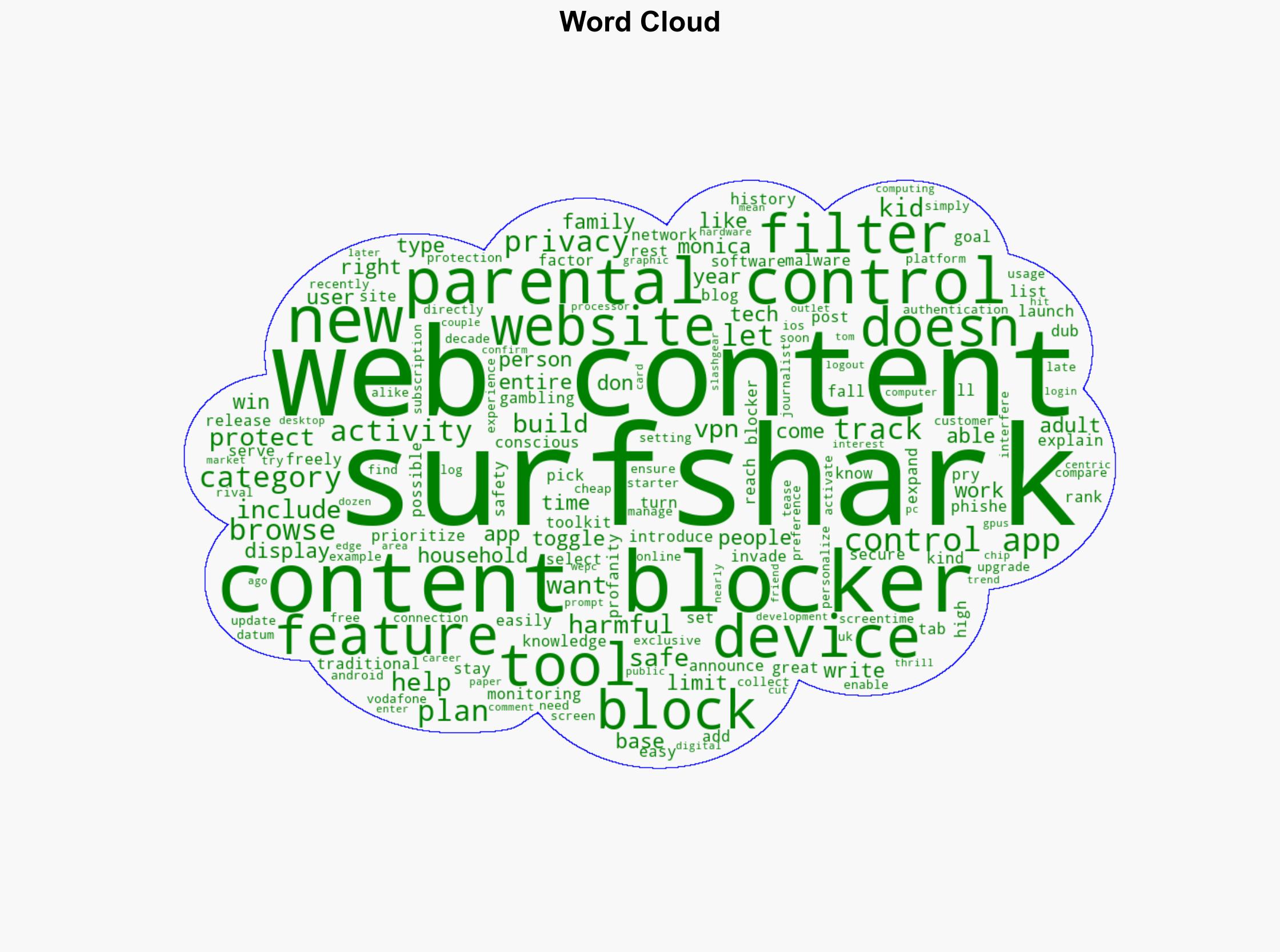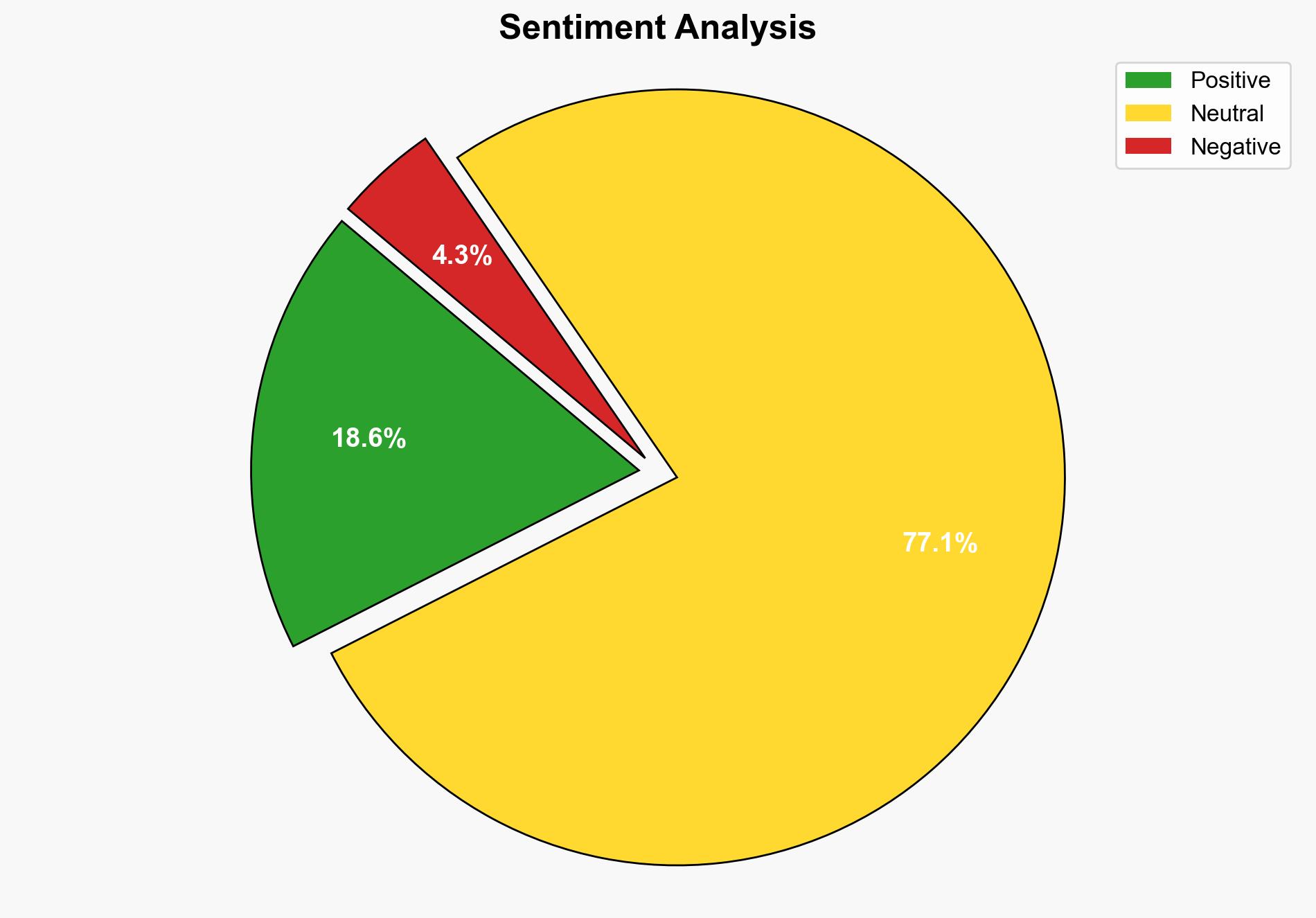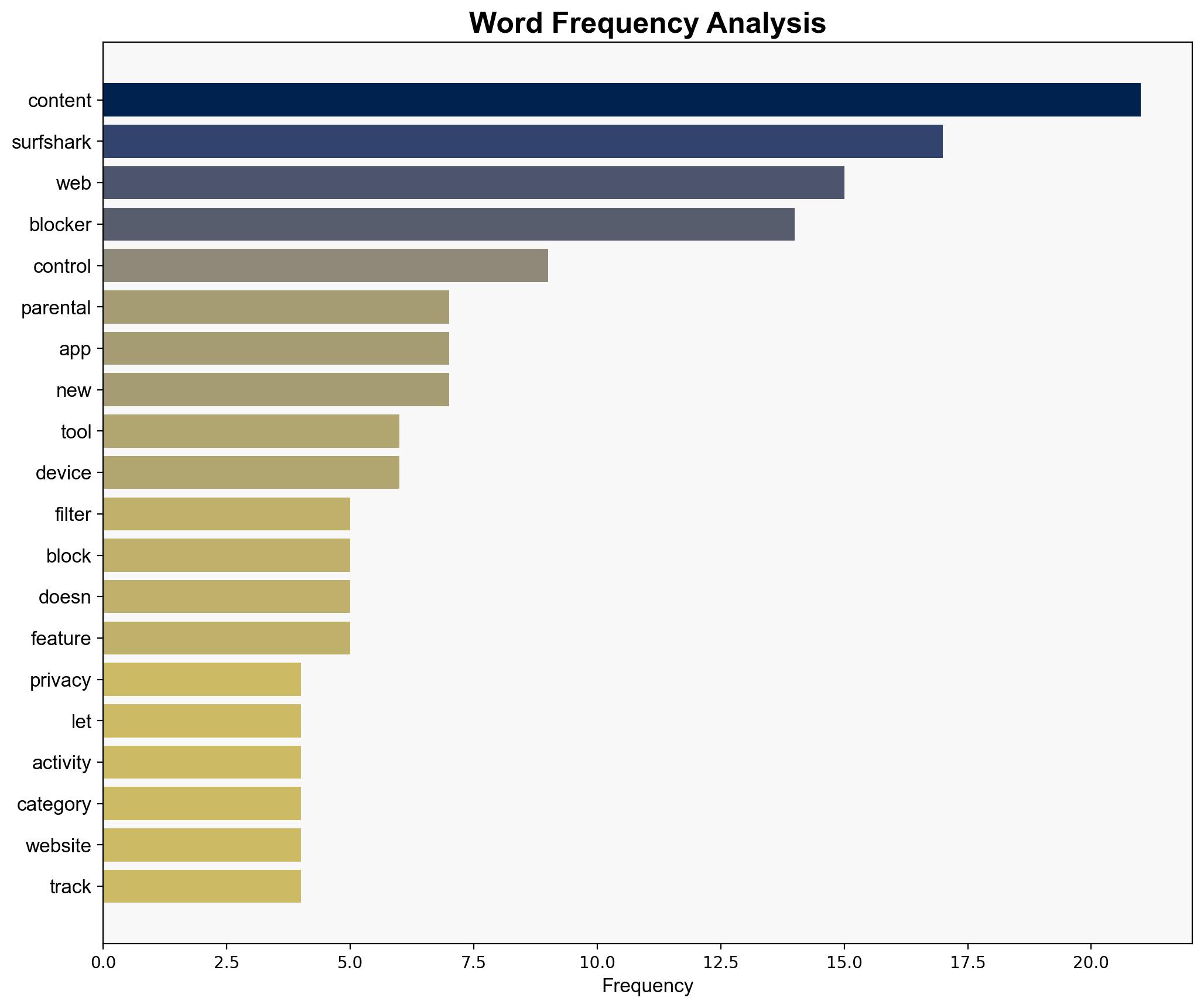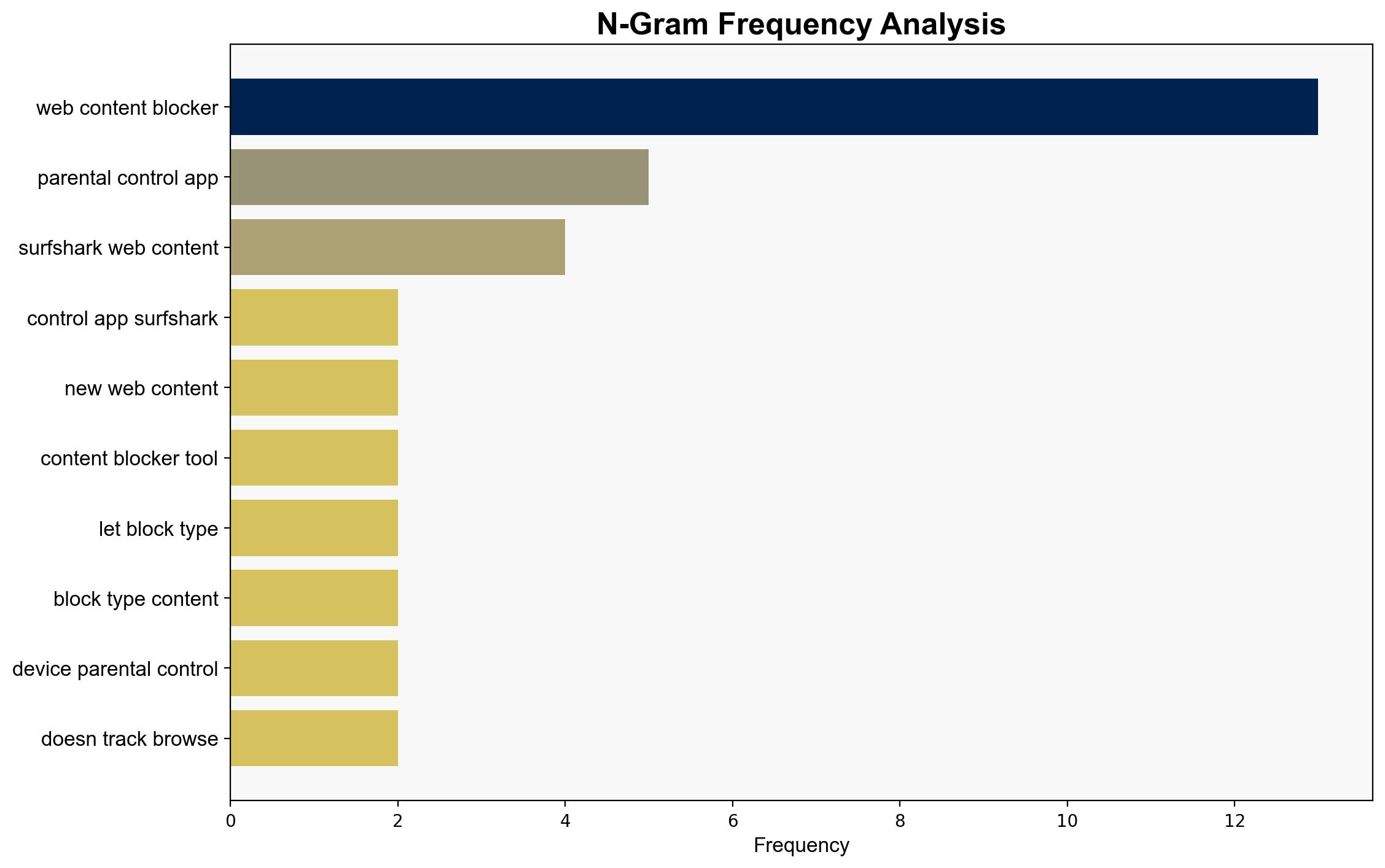Surfshark adds a web content blocker to prioritize privacy over monitoring here’s how it can keep your kids safe – TechRadar
Published on: 2025-10-21
Intelligence Report: Surfshark adds a web content blocker to prioritize privacy over monitoring here’s how it can keep your kids safe – TechRadar
1. BLUF (Bottom Line Up Front)
Surfshark’s introduction of a web content blocker prioritizes user privacy while offering content filtering capabilities. The most supported hypothesis is that Surfshark aims to differentiate its product by focusing on privacy rather than comprehensive parental controls. Confidence in this assessment is moderate, given the limited information on user adoption and market response. It is recommended to monitor user feedback and competitive responses to assess the tool’s market impact.
2. Competing Hypotheses
1. **Hypothesis A**: Surfshark’s web content blocker is primarily a strategic move to enhance user privacy and differentiate from traditional parental control apps by not tracking browsing history.
2. **Hypothesis B**: Surfshark’s tool is a preliminary step towards developing a more comprehensive parental control suite, with privacy as a marketing angle to attract privacy-conscious users.
Using ACH 2.0, Hypothesis A is better supported. The emphasis on privacy and the lack of features like screen time management or activity tracking align with a strategy focused on privacy rather than full parental control.
3. Key Assumptions and Red Flags
– **Assumptions**: It is assumed that users prioritize privacy over comprehensive monitoring features. Another assumption is that Surfshark’s current market position allows it to successfully compete with established parental control apps.
– **Red Flags**: The absence of user adoption data and competitive analysis raises questions about the tool’s effectiveness and market acceptance.
– **Blind Spots**: Potential future integration of more parental control features is not addressed, which could alter the competitive landscape.
4. Implications and Strategic Risks
– **Economic**: Surfshark could capture a niche market of privacy-focused users, potentially increasing its market share.
– **Cyber**: The tool’s focus on privacy could attract users concerned about data security, but may also limit its appeal to those seeking comprehensive parental controls.
– **Geopolitical**: Privacy-focused tools may face scrutiny or regulatory challenges in regions with strict data monitoring laws.
– **Psychological**: Users may perceive the tool as a compromise between privacy and control, influencing adoption rates.
5. Recommendations and Outlook
- Monitor user feedback and adoption rates to assess the tool’s market impact.
- Evaluate competitive responses from traditional parental control providers.
- Scenario Projections:
- Best: High adoption among privacy-conscious users, leading to increased market share.
- Worst: Low adoption due to limited features compared to traditional parental control apps.
- Most Likely: Moderate adoption with potential for future feature expansion.
6. Key Individuals and Entities
Monica, a tech journalist with experience in computing developments, provides context on the competitive landscape and user expectations.
7. Thematic Tags
cybersecurity, privacy, technology innovation, market competition





